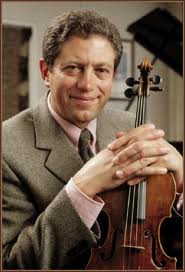|
Symphony
FROM THE NEW WORLD TO THE OLD WORLD
by Peter Lert
Saturday, June 14, 2025
Chamber
MC2 DUO RECITAL CLOSES 222'S SEASON
by Terry McNeill
Saturday, June 14, 2025
Choral and Vocal
CANTIAMO SONOMA'S LUSCIOUS A CAPELLA SINGING IN SEASON ENDING CONCERT
by Pamela Hicks Gailey
Sunday, June 8, 2025
Symphony
SRS SEASON ENDS WITH RESOUNDING TA-TA-TA-BANG
by Terry McNeill
Sunday, June 1, 2025
Symphony
YOUTHFUL VIRTUOSITY ON DISPLAY AT USO'S MAY CONCERTS
by Peter Lert
Saturday, May 17, 2025
Symphony
MYSTICAL PLANETS AND LIVELY GERSHWIN ORTIZ AT FINAL SRS CONCERT
by Peter Lert
Sunday, May 4, 2025
Symphony
VSO'S CONCERT MUSIC OF TIME, MUSIC OF PLACE
by Peter Lert
Sunday, April 27, 2025
VOCAL ELEGANCE AND FIRE AT THE 222'S RECITAL APRIL 26
by Pamela Hicks Gailey
Saturday, April 26, 2025
CANTIAMO SONOMA SINGS AN INSPIRED GOOD FRIDAY MOZART REQUIEM CONCERT
by Pamela Hicks Gailey
Friday, April 18, 2025
DRAMATIC SHOSTAKOVICH SYMPHONY CLOSES PHILHARMONIC'S 25TH SEASON
by Terry McNeill
Sunday, April 13, 2025
|
 |
 Violinist Alexander Barantschik |
BARANTSCHIK AND FUKUHARA IN GLOWING FOUR SONATA NEWMAN RECITAL
by Terry McNeill
Sunday, January 15, 2012
The program for Alexander Barantschikís violin recital Jan. 15 in Newman Auditorium was not at first glance auspicious. And not because of the merits of the four sonatas, as all are masterpieces of the standard repertoire. The critical quandary was that the program was so conventional, the pieces comfortable for the artist, who as the San Francisco Symphony Concertmaster presumably has minimal practice time in less-often-played repertoire. Sonatas by Elgar, Faure, Respighi, Dohnanyi, Paderewski, Strauss, Rubinstein, Busoni, Reger and St. Saens would have been welcome for a Sonoma County audience.
And lowering the bar for an orthodox music menu, Mr. Barantschikís partner in the San Francisco Symphony, Robin Sutherland, was unable to play and on short notice Akimi Fukuhara replaced him at the piano, flying in from Japan.
All this in hand, how was the playing in what was offered? Very fine indeed, beginning with Beethovenís first Sonata in D Major, Op. 12, No. 1. Playing from score as he did all afternoon (understandable given a new pianist), Mr. Barantschikís reading had a light touch throughout, echoed by the lovely and fast scales from his partner, her trills in both hands shimmering. A wider vibrato characterized the Andante con Moto second movement, still with a chaste tone. The tempos were brisk in the finale with Ms. Fukuhara pushing the pace and underlining subtle off-beat dissonances. Mr. Barantschik carefully controlled the final short chords, eliminating vibrato on several and then deftly adding it at the penultimate three.
Brahmsí G Major Sonata, Op. 78, closed the first half and began in a stately, almost leisurely way. It was a performance under the violinistís complete bow control, and perhaps on balance a little understated. Mr. Barantschikís tone could be slightly dry at times, particularly in fast passages close to the bridge, but always rich in the lower registers. Ms. Fukuhara chose not to emphasize a sonorous bass at the movementís end, producing a muted sound, but Mr. Barantschik preceded his final two chords with old fashioned appoggiaturas. A lovely conceit.
The following Adagio unfolded with great charm, the highlight being a threnody line for the violin romantically played over a soft ostinato piano part. The concluding Allegro molto brings back themes from the first two movements and Mr. Barantschik wove them into a rich Brahmsian fabric that was both tender and contented.
Following a long intermission the audience returned for two more expertly-played sonatas, Mozartís E Minor (K. 304) and the great Franck in A Major. The two-movement Mozart work, a Parisian sonata from 1778, was performed with an elegant interplay of voices. The instrumental balances were good and only in a few isolated places the artists were not in sync. The piano sporadically covered the violin line in the Tempo di menuetto in this Beethovenesque work, but careful legato and even chord playing from the duo produced musical optimism (when in E Major) from the prevailing sad tone of the entire piece.
Franckís Sonata was admired by his contemporaries and has been a staple for virtuosos since the Ysaˇe premiere in 1886. Mr. Barantschik phrased the graceful opening movement with great care and Ms. Fukuharaís piano part had larger sonority and impact than in the previous works. The reverse characterized the fiery and turbulent Allegro, Ms. Fukuharaís scales quicksilver but lacking needed heft in the bass, and the violinistís thematic projection potent in his top range. In the improvisatory Recitativo the music soared, the playing the finest of the concert. Mr. Barantschik held the fermata at the end, a captivating effect.
This richness of the duet continued in the canonic finale (Allegretto), each instrument playing off the other with majesty, the bits of previous movement themes masterly interwoven and leading to an exalted ascending violin scale and piano run at the end. It was a fervent and committed Franck throughout.
A standing ovation from the audience of 190 erupted, and despite repeated curtain calls, there was no encore to extend what was arguably the best local violin recital since Mr. Barantschik's colleague, Nadia Tichman, played four years ago in Oakmont.
|
